You can’t use Fitbit’s fall detection safety features because no current Fitbit device includes this technology. While Fitbit devices have accelerometer hardware capable of detecting falls, they lack the necessary software implementation and algorithms to convert motion data into fall alerts. Instead, you’ll need to rely on existing safety features like heart rate monitoring, GPS tracking, and manual timers for check-ins. Google’s Pixel Watch offers fall detection if you’re seeking extensive emergency response capabilities.
Current State of Fitbit Fall Detection Technology
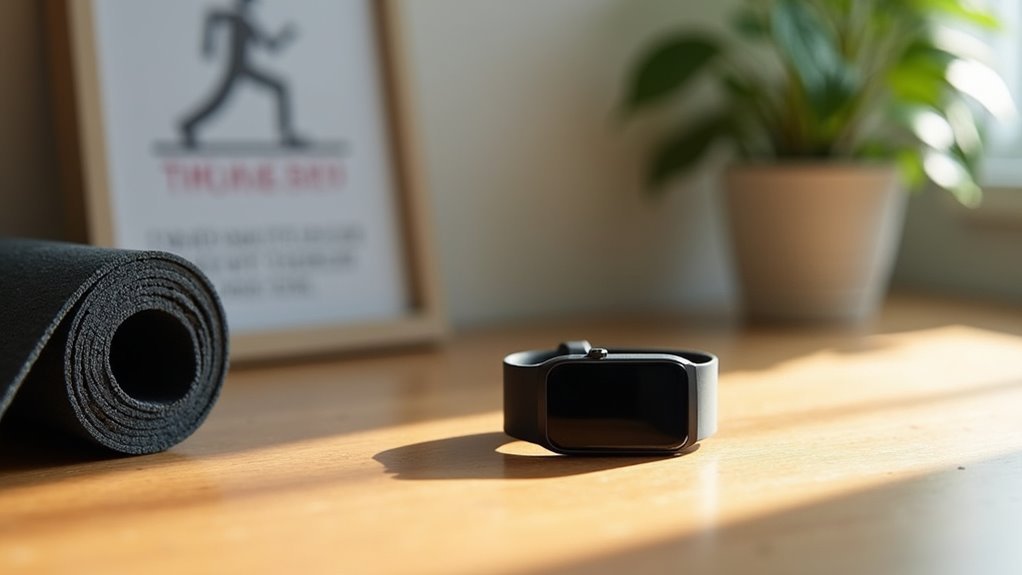
Wondering whether your Fitbit can detect falls and alert emergency contacts? You’ll need to look beyond traditional Fitbit devices for this safety feature.
Currently, no Fitbit-branded smartwatches or fitness trackers include fall detection capabilities, despite growing user demand for this feature in premium models.
Despite user requests for enhanced safety features, Fitbit has yet to incorporate fall detection technology into any of their current device models.
Your best alternative is Google’s Pixel Watch series, which combines Fitbit’s health tracking technology with fall detection functionality. However, this isn’t technically a true Fitbit device.
The absence of fall detection in actual Fitbit products appears linked to Google’s strategic focus on other features and potential technical integration challenges. Additionally, Fitbit devices lack SOS features entirely, which limits their emergency response capabilities.
While competitors like Apple Watch have offered fall detection since 2018, there’s no clear timeline for when Fitbit might add this safety feature to their lineup.
Understanding Fitbit’s Existing Safety Features
You’ll find that current Fitbit devices don’t include traditional fall detection, but they do offer several safety-related features worth understanding.
Your Fitbit can help monitor your well-being through heart rate alerts, activity tracking, and community-based safety discussions that may serve similar protective purposes. The Community Forums provide a valuable space where users exchange safety tips and techniques for maximizing their device’s protective capabilities.
Let’s explore how you can set up safety check timers, use existing safety signal capabilities, and configure emergency contact options through workarounds and third-party integrations.
Safety Check Timer Features
While Fitbit devices excel at health and fitness tracking, they don’t currently offer dedicated Safety Check timer features like you’ll find on devices such as the Google Pixel Watch.
However, you can use existing Fitbit functions creatively for safety purposes. Your device’s timer and alarm features, though designed for workouts, can serve as makeshift check-in reminders. The GPS capabilities help track your location during activities, while continuous heart rate monitoring detects irregularities that might signal distress.
Here’s what you can utilize for safety-related timing:
- Set workout timers as check-in reminders
- Use alarm functions for scheduled safety calls
- Enable GPS tracking during outdoor activities
- Monitor heart rate for health emergencies
- Connect to smartphone notifications for emergency contacts
For additional health monitoring, newer models include EDA scan functionality that can help assess stress levels during potentially challenging situations.
Safety Signal Capabilities
Beyond basic fitness tracking, Fitbit offers Safety Signal as part of its premium subscription service to keep you connected during emergencies.
This feature provides LTE connectivity for your Google Pixel Watch when you’re not connected to your phone or don’t have a carrier plan active on the device.
Safety Signal enables you to contact emergency services and communicate with your emergency contacts during critical situations.
It works seamlessly with Fall Detection, automatically connecting you to help after a hard fall is detected.
The service includes Emergency Sharing and Emergency SOS capabilities, giving you multiple ways to reach out for assistance. Users have been actively requesting emergency alert features through the Fitbit Community platform, emphasizing the importance of these safety functionalities for exercising and daily activities.
You’ll need a Fitbit Premium subscription and an LTE-capable watch to access these features, with availability limited to the US, Canada, UK, and Germany.
Emergency Contact Setup
Setting up your emergency contacts properly guarantees Fall Detection and other safety features can reach the right people when you need help most.
Your Fitbit Ace LTE automatically designates parents as emergency contacts, making initial setup straightforward. You’ll manage these contacts through the Fitbit app on your paired smartphone, where you can add or remove contacts as needed.
When configuring emergency contacts, remember these key points:
- Parents automatically become emergency contacts with star icons displayed on their contact photos
- You can add one non-parent emergency contact by toggling “Set as emergency contact” during invitation
- Emergency calls follow a hierarchy: family manager first, then other parents, then designated contacts
- Contacts outside your family group need unsupervised Google accounts
- Latest device software guarantees proper emergency contact synchronization
For additional medical safety information, consider setting up the MED ID app to display critical health details like allergies, medications, and conditions that first responders might need during an emergency.
Safety Check Timers and How They Work
You’ll need to understand that current Fitbit devices don’t actually include safety check timers or fall detection capabilities.
If you’re looking to set up these features, you’ll have to contemplate alternative smartwatches like the Apple Watch or Google Pixel Watch that offer genuine fall detection with automated emergency protocols.
Since Fitbit hasn’t implemented these safety systems, there aren’t any timer alerts to manage or safety check configurations to adjust on your current Fitbit device. Many users in the Fitbit community forums have expressed the need for these safety features, particularly for outdoor activities where emergency contact notifications could be crucial.
Setting Up Safety Check
Two essential components work together to make Fitbit’s Safety Check feature effective: proper initial setup and configurable timer functionality.
You must be 18 or older to activate Safety Check, which is available on select Fitbit devices with GPS and advanced health monitoring capabilities. Setup occurs through the Fitbit app on your compatible smartphone or tablet.
The configuration process involves several key requirements:
- Device pairing – Connect your Fitbit device to your smartphone or tablet
- Location services activation – Enable GPS functionality on your paired device
- Emergency contact addition – Input contact information through the Fitbit app
- Timer customization – Set specific durations for activities like workouts
- Alert message personalization – Customize emergency messages sent to contacts
For families with children using Fitbit devices, parents can establish a Family Account to monitor and manage safety features across multiple devices. You’ll also need an active Fitbit Premium subscription for full functionality.
Timer Alert Management
Once you’ve completed the initial setup, Safety Check timers function as your digital safety net by counting down from a predetermined duration until you actively cancel them.
You can manually start these timers before activities like hiking or running, or set them to activate automatically during specific workout modes. The timer runs in the background without interrupting other device functions, continuously monitoring for your response.
When the countdown expires, your Fitbit will first alert you with vibrations or sounds, giving you a chance to cancel the protocol.
If you don’t respond, the device assumes you need help and automatically contacts your emergency contacts while sharing your location data. These features are particularly valuable for individuals who work alone or engage in solitary activities where help might not be immediately available.
You maintain complete control and can cancel or reset the timer anytime before expiry.
Safety Signal Capabilities for LTE-Enabled Devices
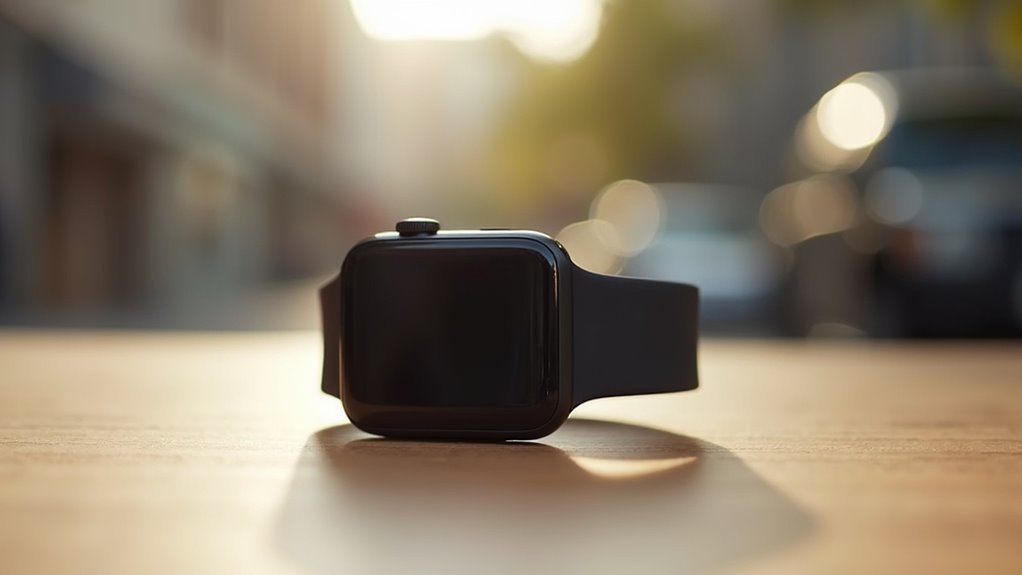
Safety Signal transforms your LTE-enabled Fitbit into a powerful emergency communication tool when you’re away from your phone. This feature requires a Fitbit Premium subscription and provides essential safety capabilities through 4G LTE connectivity.
Safety Signal turns your LTE Fitbit into an independent emergency device, delivering critical safety features without requiring your smartphone nearby.
You’ll gain access to emergency communication features and fall detection functionality, though availability varies by country due to network support differences.
Safety Signal enhances your device’s emergency capabilities through:
- Emergency Communication – Direct access to safety features without your phone nearby
- Fall Detection Integration – Automatic detection paired with emergency response capabilities
- LTE Connectivity – Independent network access for critical safety situations
- GPS Location Services – Real-time location tracking for emergency responders
- Trusted Contact Access – Secure communication with designated emergency contacts
Remember that data rates may apply when using these LTE-dependent safety features. This technology addresses significant healthcare costs associated with falls in older adults by providing immediate emergency response capabilities.
Hardware Limitations Vs Software Integration Gaps
You’ll find that Fitbit devices actually possess the necessary accelerometer hardware to detect falls, but they’re missing the essential software implementation that transforms raw motion data into actionable fall detection alerts.
While your device can technically sense the impact patterns associated with falls, Fitbit hasn’t developed the algorithms or emergency response protocols that competitors like Apple and Google have integrated into their platforms.
This gap reflects Google’s strategic positioning of Fitbit as a health tracking brand rather than a thorough safety device, leaving the fall detection capability unused despite the hardware’s potential. Meanwhile, Google’s Pixel Watch is receiving fall detection updates, highlighting the company’s selective implementation of safety features across different product lines.
Accelerometer Hardware Capabilities
While Fitbit’s accelerometer hardware provides impressive 3-axis movement tracking capabilities with low power consumption, you’ll encounter specific limitations that create gaps between what the hardware can theoretically detect and what the software actually processes.
Your device’s accelerometer faces several constraints that impact fall detection accuracy:
- Memory limitations restrict storage to processed data only, preventing detailed movement analysis.
- Sampling rate restrictions may miss rapid fall movements or subtle balance changes.
- Environmental factors like temperature variations can affect sensor accuracy during critical moments.
- Hardware degradation over time reduces precision, potentially compromising fall detection reliability.
- Data processing delays occur as raw accelerometer input gets converted into actionable fall alerts.
These hardware-software integration gaps mean your Fitbit’s fall detection relies on optimized algorithms rather than thorough movement data capture. The device processes accelerometer data directly on-board to identify movement patterns rather than storing comprehensive raw sensor information.
Missing Software Implementation
Despite having capable accelerometer hardware, Fitbit devices currently lack any native fall detection functionality—a glaring omission when competitors like Apple Watch and Google Pixel Watch 2 have already integrated this important safety feature.
You won’t find fall detection in Fitbit’s software ecosystem, which focuses primarily on health monitoring like sleep and stress tracking rather than emergency safety features.
This software gap becomes more problematic considering Fitbit’s limited SDK and API support, preventing developers from creating third-party fall detection apps for these devices.
You’re left without the essential software-hardware synergy needed for emergency notification routing and automatic SOS alerts. Falls account for 37 million injuries annually requiring medical attention, making this missing functionality a significant safety concern for users.
Even Google’s recent Pixel Watch demonstrates this technology’s feasibility, making Fitbit’s absence of fall detection particularly disappointing for users seeking thorough safety monitoring.
Google’s Strategic Positioning
Google’s acquisition of Fitbit created an interesting strategic divide that reveals itself most clearly in fall detection capabilities.
You’ll notice that Google positions Pixel Watch as the premium device with dedicated fall detection hardware, while keeping Fitbit focused on fitness tracking.
This fragmentation strategy serves multiple purposes for Google’s broader ecosystem.
Here’s how Google’s positioning affects your device choices:
- Hardware differentiation – Pixel Watches get superior sensors that Fitbit devices lack
- Cost preservation – Fitbit remains affordable without expensive safety hardware
- Brand segmentation – Fitbit stays fitness-focused while Pixel handles emergency features
- Customer direction – You’re guided toward Pixel Watches for fall detection needs
- Competitive advantage – Software-hardware co-design becomes a Pixel selling point
The Pixel Watch’s fall detection relies on machine learning algorithms to distinguish between actual falls and vigorous physical activities like exercise or sports.
Why Fitbit Lacks Automatic Emergency Response
Although many users expect modern wearables to include emergency response capabilities, Fitbit has deliberately focused its product development on fitness and health tracking rather than safety features.
Fitbit prioritizes fitness tracking over emergency features, deliberately avoiding the safety capabilities that users increasingly expect from modern wearables.
You won’t find automatic emergency calling because Fitbit’s current models lack the necessary sensors for reliable fall detection and don’t include built-in cellular connectivity required for emergency communication.
The company faces significant regulatory barriers and liability concerns when implementing real-time emergency calling features.
There’s substantial legal risk if emergency responses fail or aren’t dispatched properly. Additionally, Fitbit hasn’t pursued official certification as a medical alert device, which would be necessary for such functionality.
While competitors like Apple Watch offer fall detection with automatic emergency calling, Fitbit continues prioritizing wellness metrics over safety solutions in their strategic vision. However, the company has demonstrated its capability to develop emergency healthcare devices when addressing critical medical needs, as shown through specialized projects for hospital settings.
Google’s Product Strategy Impact on Fitbit Features
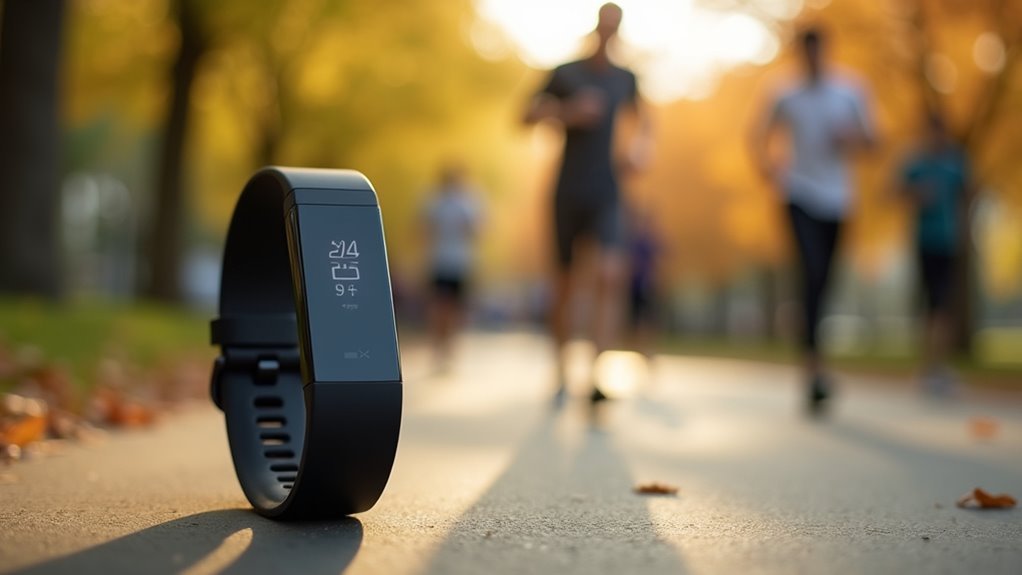
When Google acquired Fitbit in 2021, the tech giant’s broader ecosystem strategy fundamentally shifted how Fitbit approaches feature development.
You’ll notice this impact across safety features like fall detection, where Google’s AI capabilities enhance accuracy and response times. The integration prioritizes seamless connectivity with Android devices while maintaining third-party app compatibility.
Google’s influence extends beyond technical improvements.
You’re seeing expanded product diversification, with Fitbit moving beyond basic trackers toward extensive health monitoring systems. This strategic shift affects how safety features are prioritized and developed. The company now employs a value-based pricing strategy that positions these advanced safety features as premium offerings.
Key impacts of Google’s strategy on Fitbit features include:
- Enhanced AI-powered health tracking and fall detection accuracy
- Deeper Google Assistant integration for emergency responses
- Improved data analysis through machine learning algorithms
- Strengthened competitive positioning against Apple Watch
- Accelerated innovation in wearable safety technologies
Alternative Smartwatch Options With Fall Detection
While Fitbit offers solid fall detection capabilities, you’ll find several compelling alternatives that might better suit your specific needs and budget.
Apple Watch Series 9, Ultra, and 10 provide automatic fall detection with emergency SOS, calling help if you’re unresponsive.
Samsung Galaxy Watch models give you 60 seconds to respond before alerting contacts.
For dedicated medical alert features, Bay Alarm Medical’s SOS Smartwatch costs just $179 with AI fall detection and strong emergency response.
Medical Guardian MG Move includes caregiver portals for family communication.
KOSPET smartwatches eliminate monthly fees while offering 18-hour battery life. True medical alert smartwatches include built-in cellular capabilities, allowing them to operate independently without requiring connection to your smartphone.
Consider factors like battery duration, subscription costs, smartphone compatibility, and whether you prefer medical-focused devices over general fitness trackers.
Comparing Fitbit to Competitors’ Emergency Systems
Despite exploring alternative smartwatch options, you might wonder how Fitbit’s emergency capabilities actually stack up against its main competitors. The comparison reveals significant gaps in Fitbit’s safety features compared to devices like the Apple Watch.
Here’s how Fitbit compares to competitors’ emergency systems:
- Fall detection: Fitbit devices lack native fall detection, while Apple Watch and Google Pixel Watch offer reliable fall sensing.
- Automatic emergency calling: Competitors automatically contact 911 when falls are detected and users don’t respond.
- Real-time location sharing: Apple Watch provides continuous location updates to emergency contacts during incidents.
- SOS functionality: Most competitors include dedicated emergency calling features that Fitbit devices don’t support.
- Proven reliability: Competitor systems have documented real-world success stories in emergency situations.
The Fitbit Versa 4 does include SOS emergency calling via side button for quick access to emergency services, which provides some safety capabilities for users who need immediate assistance.
Future Prospects for Fitbit Emergency Capabilities
Looking ahead, Fitbit’s emergency capabilities could evolve considerably as the company explores new health-detection algorithms and expands its research partnerships.
You’ll likely see developments stemming from Fitbit’s current work on illness detection, including early COVID-19 identification research with healthcare institutions and military organizations.
While Fitbit hasn’t announced specific emergency response features, the strong user demand you’re part of could drive innovation.
You’ve joined countless users requesting GPS location alerts, audible emergency alarms, and automated contact notifications during emergencies.
The competitive landscape shows that brands like Samsung already offer emergency alert features through third-party services, highlighting gaps in Fitbit’s current offerings.
However, you should expect significant challenges ahead.
Fitbit would need new infrastructure, operator teams, and permits to implement medical alert systems.
Privacy concerns around storing sensitive location and health data present additional hurdles that’ll require careful navigation.
Frequently Asked Questions
Can I Use Third-Party Apps to Add Fall Detection to My Fitbit?
You can’t use third-party apps to add fall detection to your Fitbit. No apps exist that provide this functionality, and Fitbit’s API doesn’t allow third-party developers access to the necessary sensor data for fall detection.
Will My Fitbit Warranty Be Voided if I Modify It for Fall Detection?
Yes, modifying your Fitbit for fall detection will void your warranty. Fitbit’s Limited Product Warranty doesn’t cover damage from alterations, servicing, or repairs performed by anyone other than Fitbit itself.
How Much Battery Life Does Fall Detection Typically Consume on Smartwatches?
Fall detection typically consumes significant battery on smartwatches since it requires continuous accelerometer and gyroscope monitoring. You’ll notice reduced battery life, though manufacturers optimize algorithms to minimize the drain while maintaining detection accuracy.
Can Fitbit Detect Other Medical Emergencies Besides Falls?
Your Fitbit can’t detect medical emergencies automatically. It monitors heart rate irregularities like AFib and tracks temperature variations, but won’t call for help during cardiac events or other medical crises requiring immediate intervention.
Are There Legal Liability Issues for Fitbit if Fall Detection Fails?
You won’t find direct legal precedent holding Fitbit liable for fall detection failures. However, you could theoretically face product liability if misleading advertising or negligent design causes harm during emergencies.
In Summary
You’ll find that Fitbit currently doesn’t offer true fall detection like Apple Watch or some Garmin models. However, you can still use safety check timers and emergency contacts through the app. If you’re prioritizing fall detection, you’ll need to contemplate switching to competitors with more advanced emergency features. Keep watching for updates though—Google’s integration with Fitbit may bring enhanced safety capabilities in future device releases.

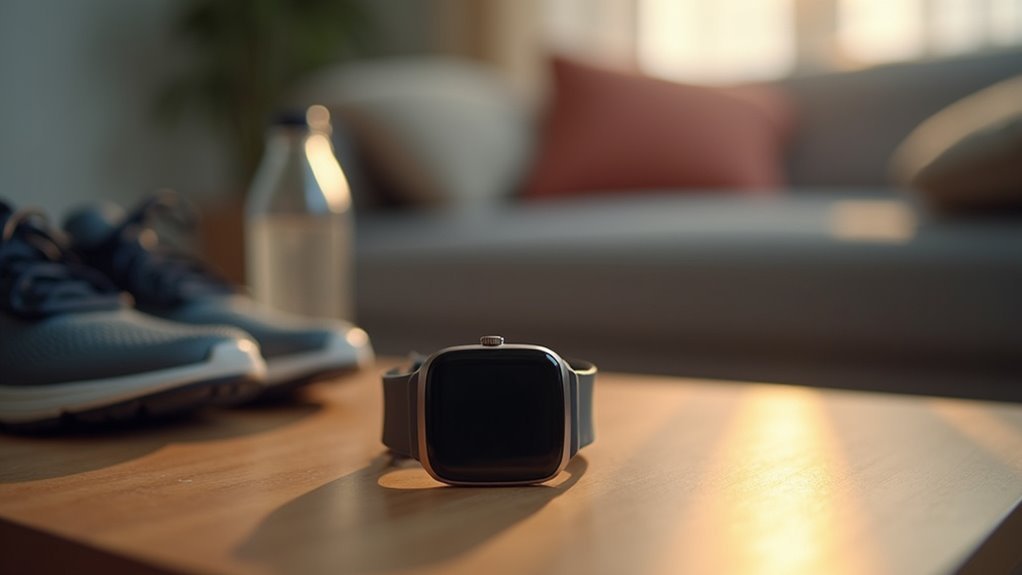

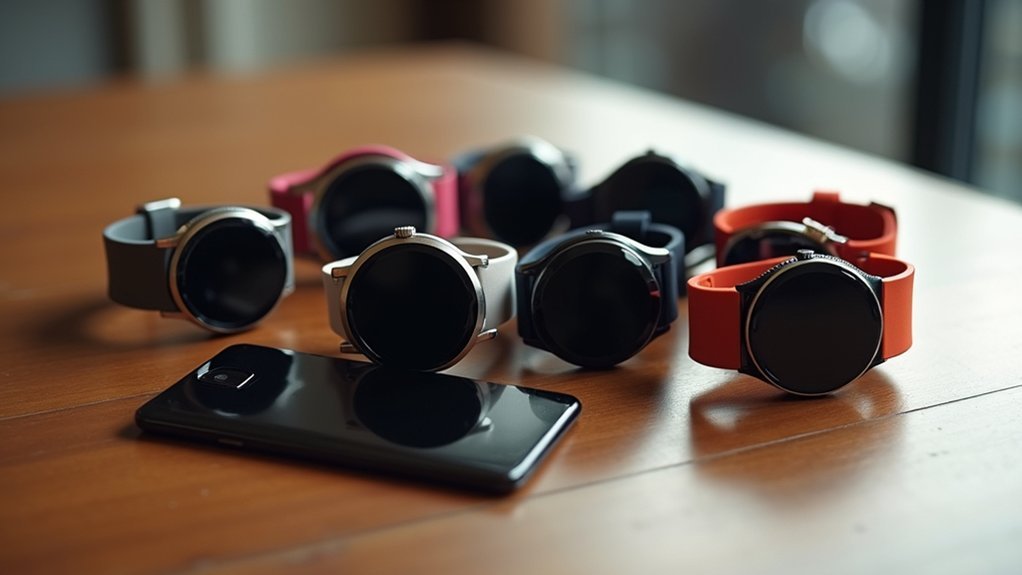
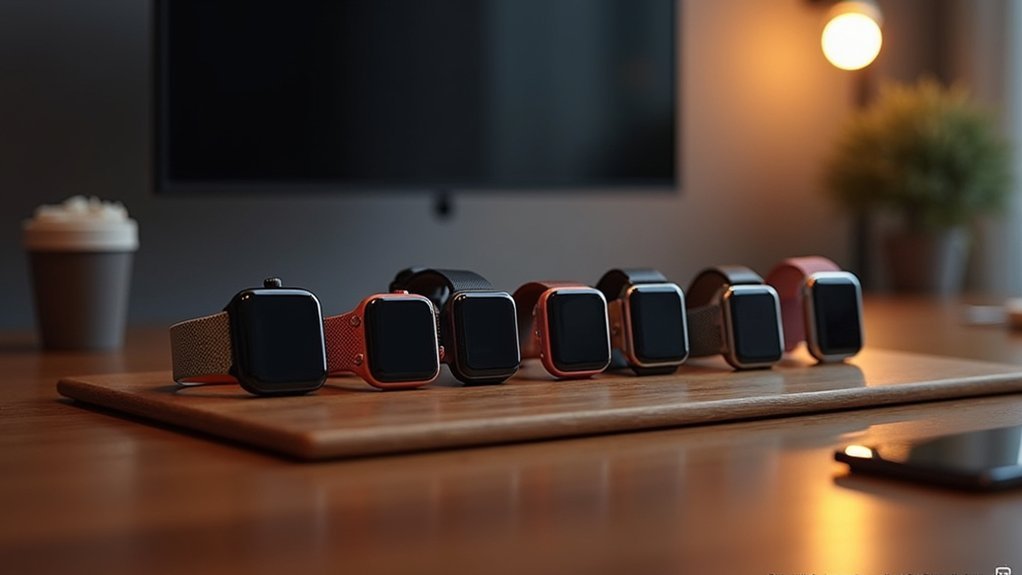
Leave a Reply